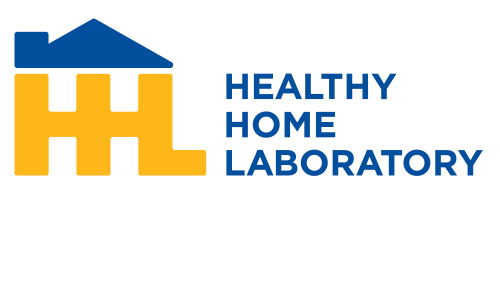
The Rise of Aging in Place
A shift away from traditional care facilities
As you take a stroll down a tree-lined street in Pittsburgh, what appears to be a typical red brick row home is actually a step inside a cutting-edge research facility equipped with smart home technologies, safety modifications and adaptable living spaces designed to enhance seniors’ quality of life. That building operates as a living project, called the Healthy Home Laboratory, where real-world aging challenges are addressed through innovative solutions. It enables practical, effective solutions to be tested and implemented, to help seniors maintain their independence and well-being. But more details on that later….
As the global population ages, the question of how to age gracefully is gaining significant attention and attracting investment. For many seniors, the answer lies not in assisted living facilities or nursing homes, but in the comfort of their own homes. Aging at home is becoming an increasingly preferred option for seniors who wish to maintain their independence, stay connected to their communities, and enjoy the familiarity of their surroundings. Moreover, aging in place can also offer significant cost savings—particularly due to recent innovations in care delivery. However, to make this possible, it requires careful planning, support and a deep understanding of the latest healthcare research on senior citizen health and well-being.
The Benefits of Aging at Home: What the Research Says
Aging at home offers numerous benefits, both psychological and physical, that are increasingly supported by scientific research. For instance, a study published in the Journal of the American Geriatrics Society found that seniors who age at home experience lower levels of stress and anxiety compared to those in institutional settings. The study emphasized that the familiar environment of one’s home provides comfort and stability, which are crucial for mental health: Seniors aging in place are more likely to stay active and engaged with their communities—these are essential components for maintaining cognitive function and overall well-being.
Further research by the National Institute on Aging suggests that seniors who remain in their homes are less likely to experience rapid cognitive decline. This finding is linked to the concept of “environmental familiarity,” where consistent exposure to known surroundings and routines helps maintain cognitive health. This is particularly important in the context of neurodegenerative conditions like dementia, where disruptions in routine can exacerbate symptoms.
Moreover, aging at home allows seniors to maintain their routines and continue living life on their terms. This sense of control is vital for preserving dignity and self-worth as people age. The World Health Organization has highlighted that maintaining autonomy and independence is a key factor in the well-being of older adults, and aging in place directly supports these aspects.
“I want to stay in my home for as long as possible because it’s where I feel most comfortable and secure. Being surrounded by my belongings and memories gives me a sense of stability and peace that I wouldn’t have elsewhere.”
~Anonymous
Addressing the Challenges: Health Management, Safety and Social Support
While aging at home has many advantages, it also presents challenges that need to be addressed to ensure seniors can live safely and comfortably. Key challenges include managing chronic health conditions, ensuring safety within the home and providing the necessary social and emotional support.
Health Management
As people age, the prevalence of chronic health conditions increases significantly. According to the Centers for Disease Control and Prevention, approximately 85% of older adults have at least one chronic condition, and 60% have at least two. Regular medical check-ups, medication management and access to healthcare professionals are critical for seniors aging at home. Telemedicine has emerged as a valuable tool in this regard, enabling seniors to consult with doctors without leaving their homes. A 2020 study in the Journal of Medical Internet Research found that telemedicine not only improved access to care for older adults but also led to better management of chronic conditions.
Additionally, home health aides and visiting nurses can provide essential support for daily medical needs. Research published in Health Affairs suggests that integrating home health care into the aging process can reduce hospital readmissions and improve overall health outcomes for seniors.
Home Safety
To age in place safely, the home environment must be adapted to meet the changing needs of seniors. This includes installing grab bars in bathrooms, ensuring proper lighting, eliminating tripping hazards and investing in technology like emergency response systems. The American Association of Retired Persons (AARP) has reported that 77% of adults aged 50+ want to stay in their current home and community as they age, but many homes need modifications to be safe. Smart home devices, such as voice-activated assistants and automated lighting, can also enhance safety and ease of living for seniors.
A study published in the Journal of Applied Gerontology found that home modifications significantly reduced the risk of falls among older adults, which is a leading cause of injury and hospitalization in this age group. The study also noted that such modifications contribute to a greater sense of security and independence among seniors.
Social Support
Loneliness and isolation are significant risks for seniors living at home. The National Institute on Aging emphasizes that social isolation can lead to a range of health problems, including depression, cognitive decline and a higher risk of mortality. Therefore, it’s important to ensure that aging at home doesn’t lead to social isolation. Family, friends and community resources play a crucial role in providing companionship and social interaction. Senior centers, community groups, and online platforms can help seniors stay connected.
Findings by the Harvard T.H. Chan School of Public Health has shown that social engagement is a key predictor of healthy aging, with socially active seniors exhibiting better cognitive function and physical health. Additionally, the Journal of Aging and Health reports that seniors who maintain strong social networks are more likely to experience a higher quality of life and lower levels of depression.
Economic Considerations and Healthcare System Impact
Aging in place is not only beneficial for seniors’ health but also has significant economic advantages. According to a 2010 Health Affairs article, “per person expenditures are five times as high, and national expenditures three times as high, for nursing home residents compared to community residents.”
Those costs add up quickly. The National Institute on Aging estimates the average cost of a nursing home in the United States is around $8,000 per month, according to the Genworth Cost of Care Survey. In contrast, the cost of in-home care services can be significantly lower—especially when combined with family caregiving and community support services. In addition to saving money for seniors directly, the government has ample motivation to support the model: Of the $203 billion spent in 2009 for nursing homes, home health care and other long-term services and support, 66 percent was paid by Medicaid and Medicare.
Of interest, most of the cost savings studies we found reference care delivery costs before 2020, pre-pandemic. Since that experience, institutional costs have gone up while the cost and ease of home care delivery have dropped due to new care delivery models, many of which include telemedicine portals. It is likely that the prior studies have underestimated the economic impact.
Moreover, aging at home can reduce the overall long-term burden on the healthcare system. A study in the Journal of the American Medical Directors Association found that seniors who receive in-home care services are less likely to be hospitalized. By preventing hospital readmissions and promoting better management of chronic conditions, home-based care can lead to more sustainable healthcare spending.
The Future of Aging in Place
As more seniors choose to age at home, the need for supportive infrastructure will grow. This includes accessible healthcare, home modification services and community-based support systems. Policymakers and healthcare providers must work together to create environments that support aging in place, ensuring that seniors can live with dignity, independence and quality of life.
Some of these changes—like the Healthy Home Laboratory mentioned at the top of this article—are happening in Western Pennsylvania (see “Pittsburgh Initiatives” below); innovative senior care solutions can help bridge the gap between the desire for independence and the need for medical oversight. Furthermore, public awareness campaigns and educational programs can empower seniors and their families to make informed decisions about aging at home.
I think we can all understand the emotional benefits of being able to stay in our own homes as we age, surrounded by the people and memories they cherish most. It turns out with some thoughtful innovation to make it safe and practical that it can be significantly cheaper as well.
Pittsburgh Initiatives
Pitt’s Hands-on Research and Real-life Testing
The University of Pittsburgh’s Healthy Home Laboratory (HHL) is dedicated to improving the safety, health and well-being of older adults aging at home. This innovative lab—located in an old brick house in Oakland—focuses on researching and developing smart home technologies that monitor and support the daily activities of seniors.
These solutions prioritize improving access, mobility and safety while supporting independence in daily activities through smart home technologies. This often includes universal rail systems, reactive support and powered assistive devices for tasks like stair climbing. Additionally, smartphone apps are being developed to assist with environmental assessments and tasks such as medication management. The HHL aims to create home environments that can adapt to the changing needs of residents, enhancing their quality of life and enabling them to live independently for longer. — Healthy Home Laboratory
Concept Homes for Seniors
The Housing Innovation Alliance, which is based in Pittsburgh with a mission to improve homebuilding concepts across the country, is leading a program to design concept homes that enable seniors to live independently as they age. The first of these modular homes—assembled on a property just north of Pittsburgh in October 2023—incorporates smart technology, flexible layouts and universal design features, making them adaptable to the changing needs of older adults. The project aims to provide cutting-edge housing solutions that support aging in place, helping seniors maintain their independence and quality of life. —AARP’s story about the Pittsburgh project
Research sources cited, with links to the studies or organizations mentioned:
- Journal of the American Geriatrics Society: The study on reduced stress and anxiety among seniors aging at home can be found through the Journal of the American Geriatrics Society.
- National Institute on Aging (NIA): For information on environmental familiarity and its impact on cognitive health.
- Centers for Disease Control and Prevention (CDC): Statistics on chronic health conditions in older adults.
- Journal of Medical Internet Research: The study on telemedicine improving access to care for older adults.
- Health Affairs: Research on the impact of home health care on hospital readmissions.
- American Association of Retired Persons (AARP): Data on the preference of aging in place and the need for home modifications.
- Journal of Applied Gerontology: The study on home modifications reducing fall risk.
- National Institute on Aging: Information on the effects of social isolation on seniors.
- Harvard T.H. Chan School of Public Health: Research on social engagement as a predictor of healthy aging.
- Journal of Aging and Health: The study on the positive effects of strong social networks on senior health.
- Health Affairs: “Long-Term Care: Who Gets it, Who Provides it, and How Much?” [Paywall access]
- Genworth Cost of Care Survey: Data on the cost of nursing home care versus in-home care.
- Journal of the American Medical Directors Association: Study on the impact of in-home care on hospitalization rates.








One Comment